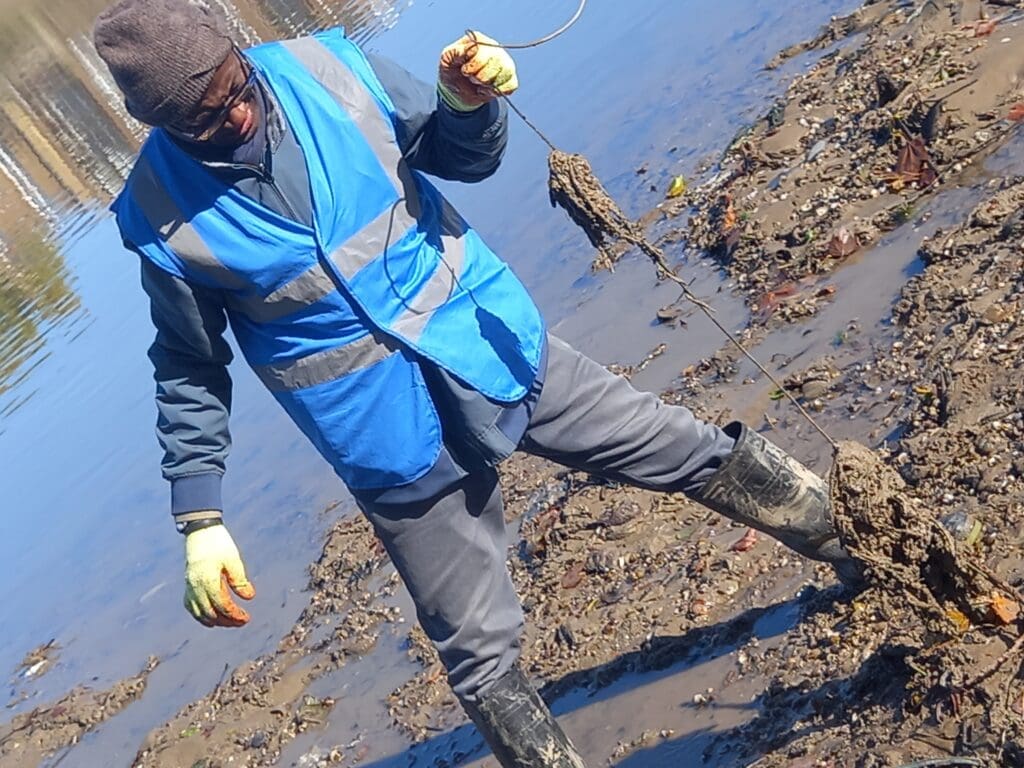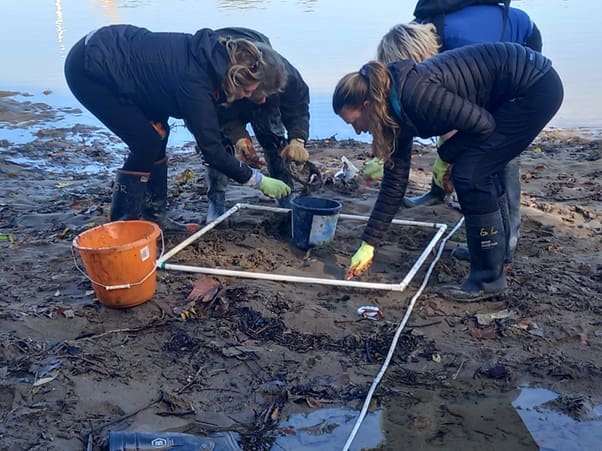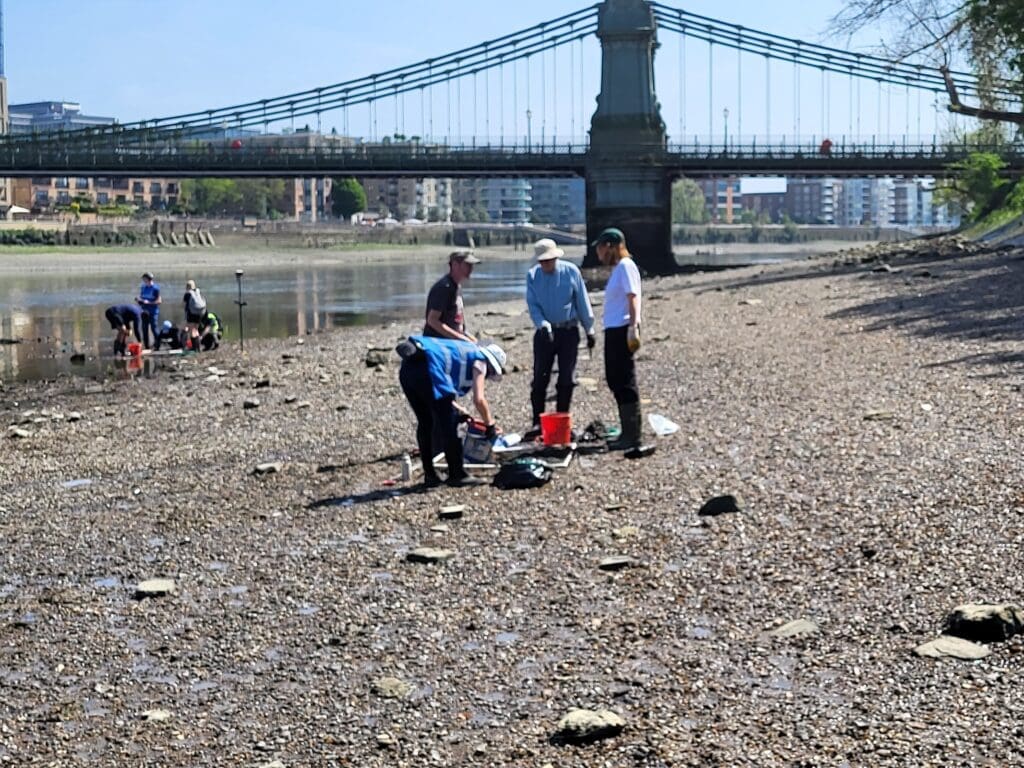Inspired by the work of Thames21 and its volunteers, the Port of London Authority (PLA) and Thames Water have decided to clear ‘wet wipe island’ in Hammersmith.
The PLA-led operation is removing an estimated 180 tonnes of congealed wet wipes that has formed the island along a 250-metre stretch of the tidal Thames near Hammersmith Bridge. It is expected to take up to a month to complete.

“As an environmental charity, we feel that this vital move is a crucial step towards protecting the health of the River Thames and its wildlife, as it will reduce the introduction of microplastics into the environment from this site,” said Thames 21.
“We have been monitoring the island since 2017. Thames21 and its volunteers have collected more than 140,000 wet wipes from the Thames foreshore. We want to give our volunteers a huge shout-out for their persistence. This has been a massive piece of work!

“Our data and research have played a vital role in raising awareness of how wet wipes containing plastic can degrade the environment and harm wildlife. Our data has also influenced Government policy. It comes after the Government recently published draft legislation to ban wet wipes containing plastic.
“We have been pushing for the latter. However, we would like to see more systemic change to tackle the issue of plastics entering the environment via wet wipes and other sanitary waste.”

Chris Coode, CEO at Thames21, said: “We want producers to get serious about plastic-free alternatives to wet wipes. We ask water companies to increase their investment in screening to prevent wet wipes and other sanitary waste which contains plastic entering the environment.
“We’d also like to see a step-change in their investments in upgrading sewage infrastructure to prevent overflows. We’d like to remind people to bin their sanitary waste and wet wipes, not flush them down the toilet, so that they don’t enter our wastewater system.”
PHOTOS: Thames21



